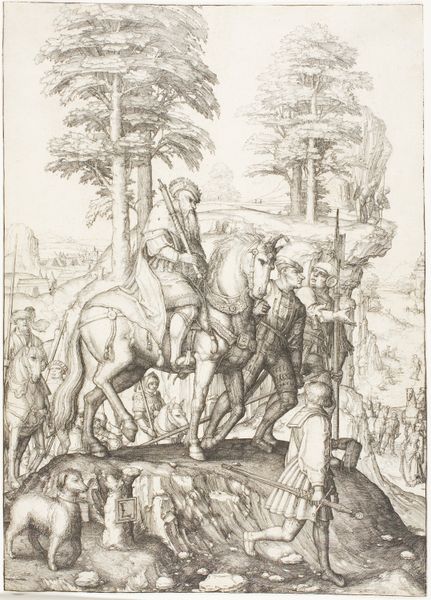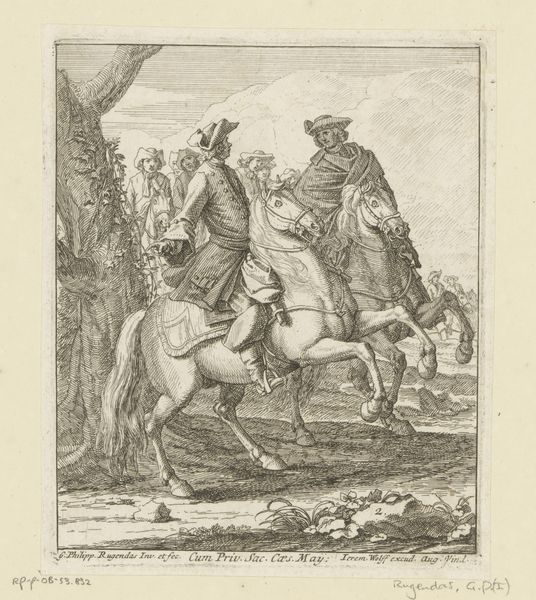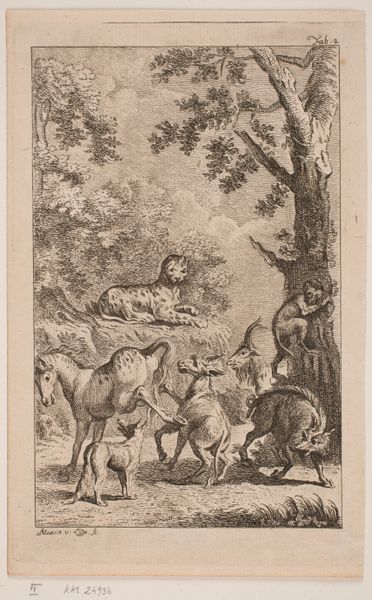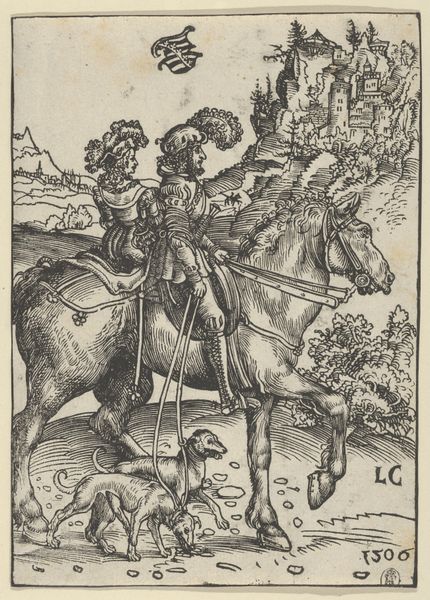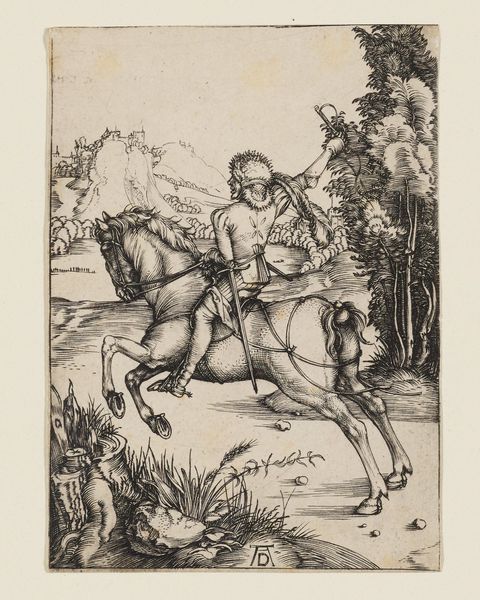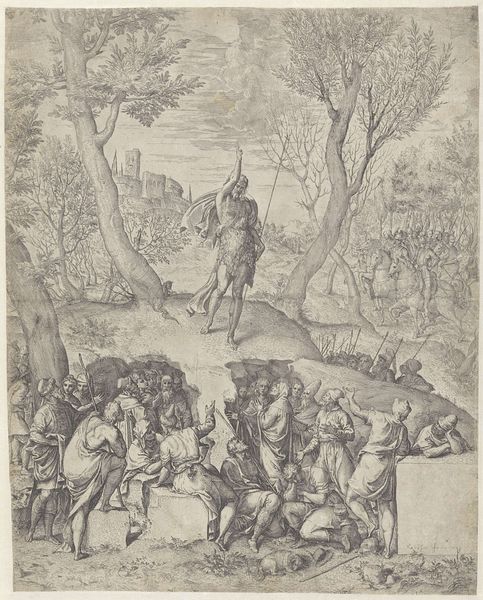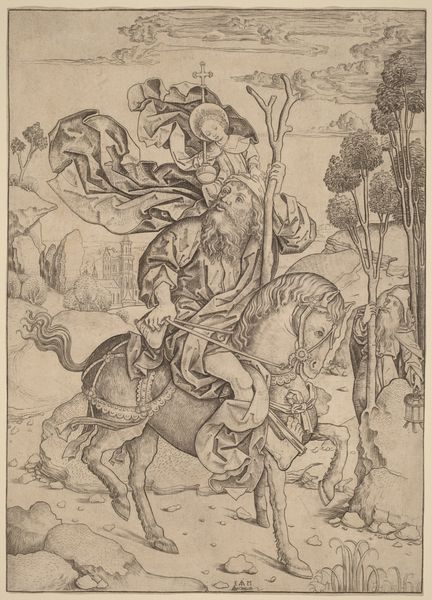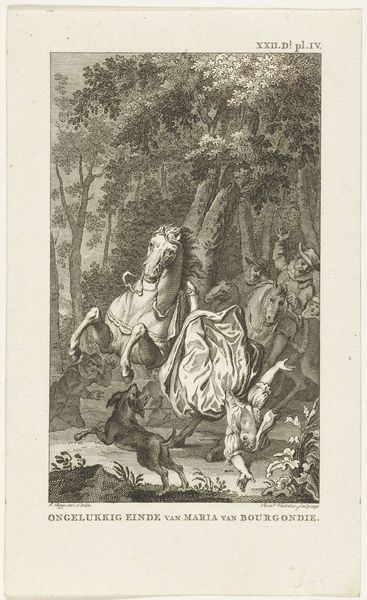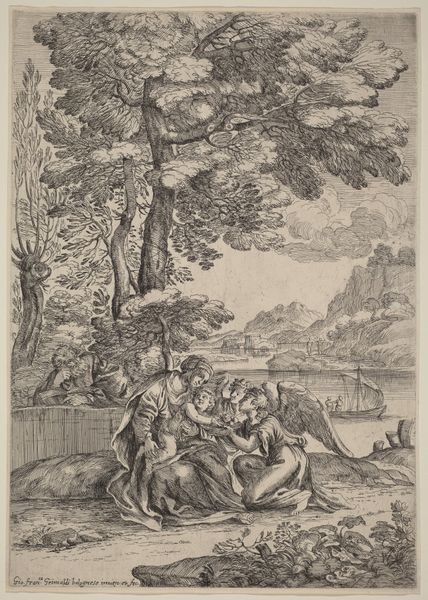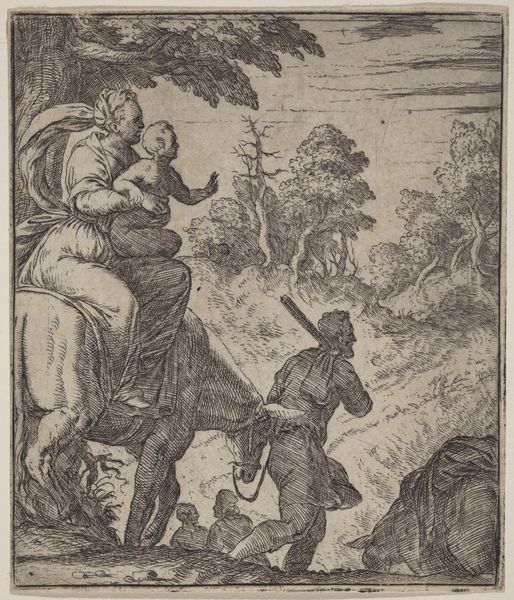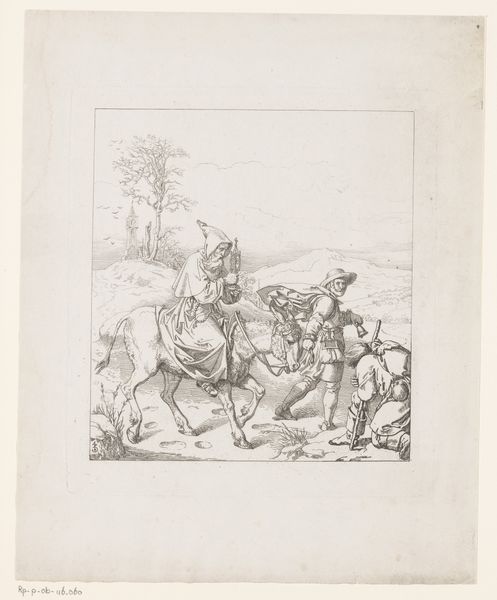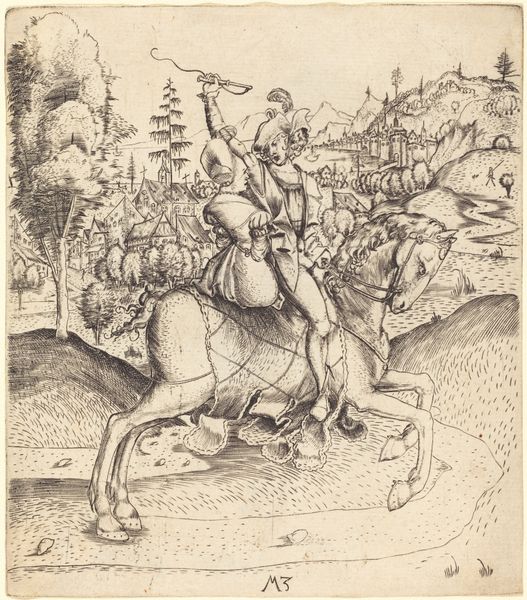
drawing, print, engraving
#
drawing
#
narrative-art
# print
#
figuration
#
history-painting
#
northern-renaissance
#
engraving
Dimensions: sheet: 10 3/4 x 7 11/16 in. (27.3 x 19.5 cm)
Copyright: Public Domain
Curator: Here we see Lucas van Leyden's "Abigail Before David," an engraving completed sometime between 1502 and 1512. Editor: It strikes me as very theatrical. The meticulous cross-hatching creates these intense, almost brooding characters that look straight out of a play. Curator: The scene itself depicts a biblical narrative, a moment of diplomacy where Abigail intercedes with gifts for the soon-to-be King David to prevent bloodshed. The artist chose engraving, which allows for incredibly fine detail. You can see it in the rendering of the figures’ garments and the texture of the landscape. These minute visual details contribute to the reading of the narrative itself. Editor: The detail is fascinating, though I'm most drawn to the sheer labor it must have required. Think of the repetitive motions, the physical act of incising these lines onto the metal plate! The social context of printmaking at this time is essential to remember: It's a craft but becoming an increasingly sophisticated commercial enterprise, pushing towards mass production of images. Curator: And those images carry profound cultural weight. Notice how Abigail’s gesture of supplication and the gifts she offers symbolize submission but also feminine wisdom capable of averting violence? It reinforced established hierarchies. Editor: Exactly, but this engraving does something different than other mediums. With engravings like this, ownership is muddier. Prints allowed imagery and ideas to circulate in society more democratically; the power dynamic starts shifting due to the materiality itself. The Northern Renaissance valued precision craftsmanship and there’s almost a tension created by such detail in a mass medium. Curator: It is like looking into a complex, deeply considered world from centuries ago, but the artistry ensured a longer life for its cultural significance and accessible symbolism. Editor: Thinking about the tangible effort invested—the artist's time, the resources consumed, makes me realize that we need to appreciate it in context with this expanded understanding of labor and craft.
Comments
No comments
Be the first to comment and join the conversation on the ultimate creative platform.
